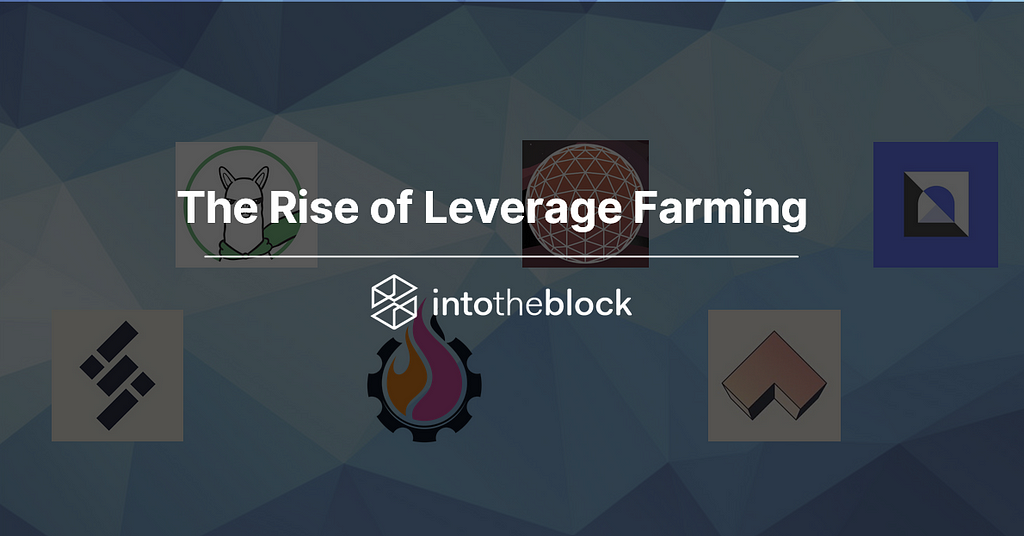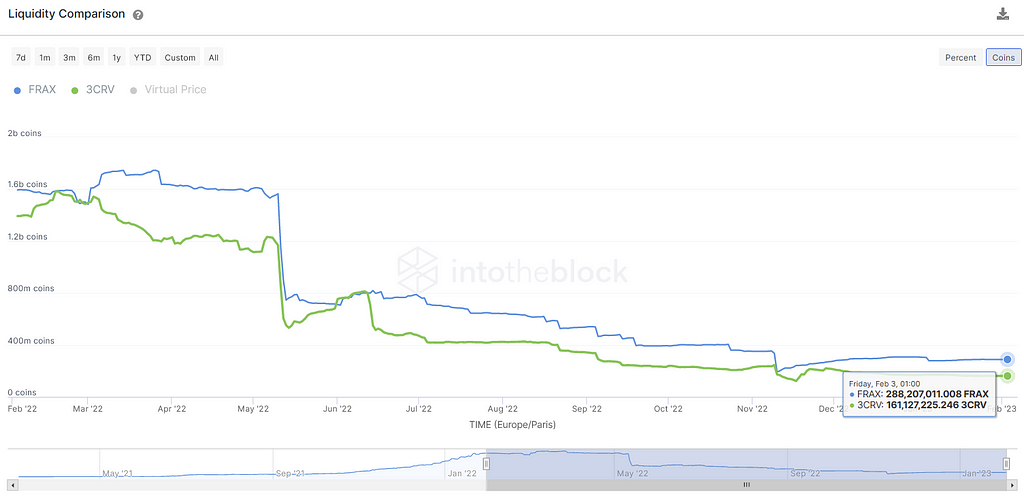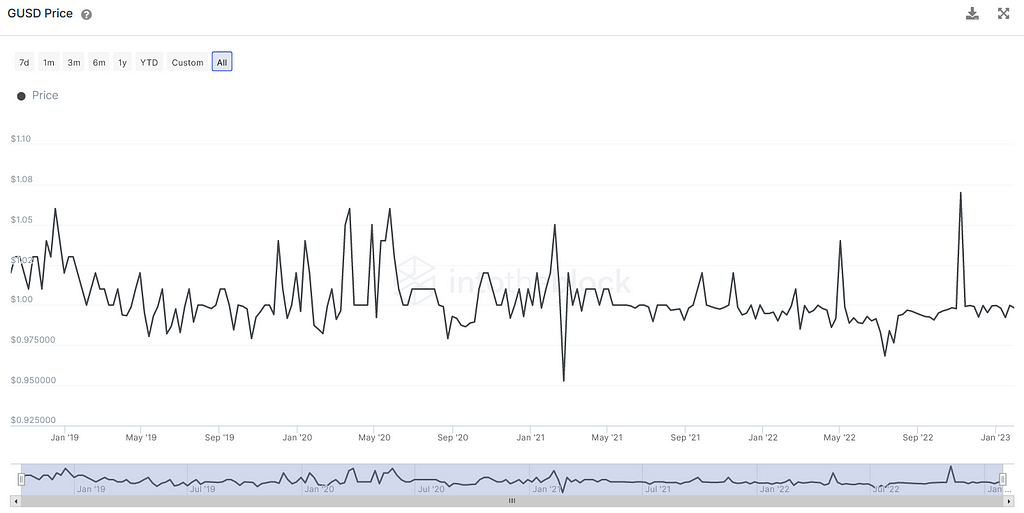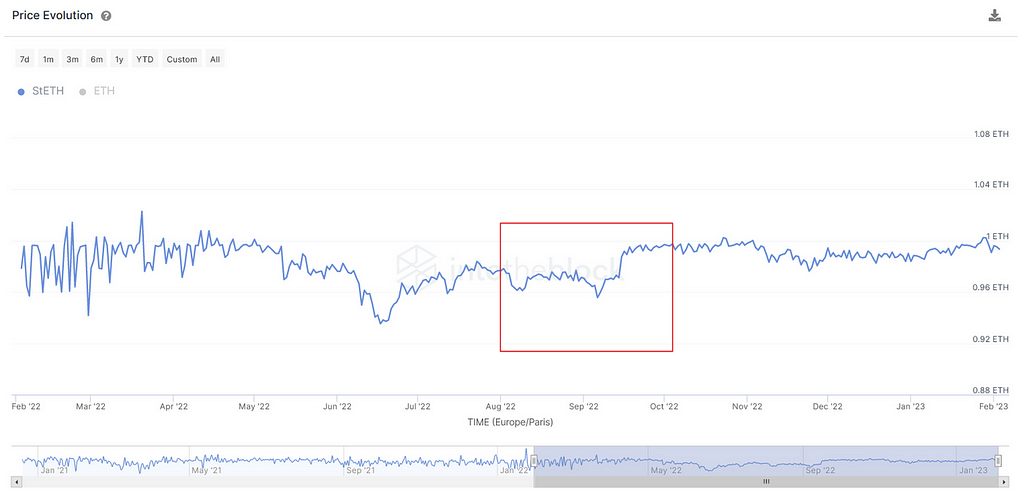Latest news about Bitcoin and all cryptocurrencies. Your daily crypto news habit.
The leveraged farming space has been gaining traction recently as a lower-risk way to boost yields for users and liquidity in liquidity pools. We dive into some of the most interesting protocols and strategies and the unseen risks that are involved.

Brief Introduction
If you aren’t familiar with leveraged farming, the concept is simple. On the lending side, leveraged farming (LF) is identical to a standard DeFi money market like Aave. Users who wish to lend out their assets deposit their funds into the supply side of the market and receive interest from users who borrow their assets.
The difference between an LF protocol and a money market is when a user wishes to borrow. On the borrow side of an LF market, users can choose from a selection of whitelisted liquidity pools (LP) to deposit assets into. Users then borrow assets from the lending side of the market to leverage their position in the LP they have chosen. While they pay interest to the lenders for borrowing assets, they also are able to generate yield through the LP, resulting in a net positive yield for their position.
The obvious benefit to users of this design is that both lenders and borrowers in an LF protocol have the potential to earn positive yields on their position, creating a net-positive environment for all users. The hidden benefit for the protocol and the lenders, is that the borrowed money is contained within the protocol and its contracts. This means that if a user’s position becomes unhealthy, the liquidated assets are easy to recover, reducing the potential of bad debt in the protocol and thus reducing the risk of lenders losing their assets.
LF protocols have existed for many years now, but several newer protocols with updated designs have recently sparked a renewed interest in leveraged farming.
Protocols at the Front
Alpaca Finance
Leading the pack (or herd) of LF protocols is Alpaca Finance which launched in February of 2021. One of the originals, Alpaca has nearly 400M TVL primarily on Binance and had reached highs of over 800M in TVL during the bull market. Alpaca Finance has demonstrated that a well-designed LF system can be sustainable in providing higher yields to borrowers and lenders while also increasing liquidity in the LPs in Dexes to provide an overall better user experience across multiple protocols.
Gearbox
The biggest star that has led the current LF narrative has been the Gearbox protocol with its Gearbox V2 release. I previously wrote about Gearbox’s innovative composability design that allows users to have multiple strategies within one credit account. Gearbox’s structure makes it possible to have a leveraged farm position with hedges or combined leveraged positions that create a pseudo-delta neutral strategy. The flexibility and design of the protocol, launched in the depths of the bear market, has managed this protocol to 10x their TVL.
Sturdy
While this protocol has less composability compared to Gearbox, the TVL has been quickly rising. As explained in IntoTheBlock’s Juan Pellicer post on Sturdy , borrowing assets for leveraged farming can be extremely advantageous on the protocol due to the 0% borrow rate as long as the utilization ratio of the token you are borrowing is below 80%. On the other side of the market, the fee sharing design between the lenders and borrowers on the interest earned in the leveraged positions, means that lenders can also earn high yields (currently 5%+ on stablecoins) without the risk of liquidation. The lending rates through Sturdy are real yields (not coming from rewards incentives). With the STRDY token yet to launch, these rates could go even higher if an incentive program from the protocol goes live. The largest markets on Sturdy are using stablecoins (DAI, USDC, USDT) but they have just launched an ETH market where users can farm the ETH-stETH pool on Curve, earning as high as 51% APY when including stETH staking rewards.

Leveraged Yields on Sturdy
New Strategies and Protocols to Watch
Leveraged Vaults Strategies
Leverage farming protocols have been getting most of the attention recently, but other protocols have also been incorporating similar LF strategies into their products as well. Angle Finance, one of the leading euro stablecoin protocols, has developed leveraged vaults that use their native agEUR token. The vaults recursively mint agEUR into yield bearing tokens like wstETH, cbETH and Curve LP tokens to generate yields for the user while increasing the supply of minted agEUR for the protocol. The current fixed interest rate for minting agEUR makes these strategies appealing for users who want to minimize costs. However, it is important for users to monitor fiat exchange rates when leveraging euro stablecoins and USD stablecoins in the same strategy to avoid liquidation.
Archimedes
The Archimedes protocol has yet to launch, but is worth mentioning given the unique design that it plans to use on how to access the LF pools via the use of their native ARCH token. Archimedes plans to take an innovative approach by auctioning off the available liquidity in the LF pools, using their token as the currency to purchase the liquidity. The idea is that this will keep the yields high in the LF pools they created by preventing oversaturation of the leverage strategies. To enter their pools, a user will have to bid in an auction using the ARCH token to get access to the available liquidity. This will drive value back to their ARCH token in the form of higher prices while keeping the pool yields attractive to bring in new liquidity providers.
This design adds a new use case for the protocol’s native token which is a big change from most other native tokens on LF protocols that have been mainly used only for governance. However, it remains to be seen if this design will be successful. Since the pools that will be used in the leverage strategies deployed by Archimedes are in external protocols, nothing will prevent another LF protocol to deploy into those pools, driving down the yields earned and therefore rendering the auction design useless.
Mars Protocol
Initially deployed on the terra network, Mars Protocol has gone through a major redesign and will redeploy imminently as its own appchain in the Cosmos ecosystem. It will have a similar design to Gearbox, using highly composable credit accounts (called Rovers) that manage several positions and strategies all at once with one single LTV ratio. How Mars Protocol differs from those above is that it is not deployed on the Ethereum mainnet but in the Cosmos ecosystem. With the power of the Inter Blockchain Communication system in Cosmos, Mars users will be able to seamlessly communicate with several other blockchains all at once. This means that users develop multi-chain strategies using a single Rover account to leverage farm across different protocols and blockchains.
Capacity Complications
The Tale of Two Users
It is seen time and again across all LF platforms that it can be difficult to attract sufficient liquidity on the lending side of their markets. This is in part due to the fact that yields on the leveraged borrow side are often multiples higher than what you can receive on the lending side. While there is a risk of liquidation on the borrow side of the market, if managed properly, leveraged borrowing is often far more profitable than simply lending assets. Degens will almost always opt for the higher yield strategies, which means that there needs to be another type of user who prefers the lower risk and return strategy. This type of user will likely come in the form of larger organizations such as investment institutions, DAOs, or other protocols, but it seems that currently most of these organizations have yet to decide that lending to leveraged degens (even in the more controlled environment of an LF protocol) is worth the yields received.
A solution to this problem of unbalanced demand has yet to gain traction, but there are some changes that could help. Additional incentives through increasing the portion of yield sharing to lenders or higher lending rates through increased borrow rates could solve part of this liquidity crunch. Another possibility to reduce economic risks to the lenders could be for protocols to devise an insurance treasury that will cover any potential liquidations on the borrow side that create bad debt. This design has been implemented in traditional DeFi money markets like Aave and Gearbox has also implemented a similar design and could be a good way for protocols to signal their intent to protect lenders from risk.
A Hybrid Solution
An alternative solution for larger depositors who want to deploy into LF strategies where capacity is low, is to deploy to both sides of the market. This would consist of a user depositing the bulk of their assets into the lending side of the protocol and then borrowing that same asset to deploy in one of the LF pools. This strategy will help reduce the costs of borrowing by keeping the utilization ratio of the pool lower while increasing the net yields of the capital deployed compared to only providing assets to the lending side of the market. Additionally, there is less capital at risk of liquidation reducing the overall risk exposure of the position.
Unseen Risks
LF protocols are designed to mitigate certain risks that are more commonly found in traditional DeFi money markets. If a liquidation occurs, the liquidated position’s assets are still accessible by the protocol’s contracts. This greatly reduces the risk of bad debt in the system consequently mitigating the chances of the protocol becoming insolvent. However, because the LF protocol is deploying the farming positions into external protocols, there is an additional layer of technical risk that the protocols take on. If the underlying protocol where the pools are located is compromised, the assets could be irrecoverable. This risk is mitigated by LF protocols through their own vetting of the different liquidity pools that they deploy assets to, opting to choose protocols and pools with assets that have a strong background in risk management.
However, LF protocols and the greater leveraging system have unseen risks that potential users and the entire DeFi ecosystem should keep in mind.
Slippage Hurts
When a user leverages a borrowed position in an LF protocol to deploy into an LP, they are usually only borrowing one asset. This means that in the background, the asset they borrow is swapped for the other assets in the LP (e.g., borrow DAI for 3CRV LP tokens and swap some DAI for equal parts USDC and USDT) to then deploy into the pool. Like if you were to make swap in a traditional way through an AMM, there is potential slippage on the exchange between the different tokens. Users should be aware that when leveraging, there are chances for higher slippage, resulting in unexpected costs. Furthermore, this impact will be felt both upon entering and exiting the position. If you enter a LP that has an imbalanced token composition, the costs could become even greater.
Cascading Liquidations Risk
As the DeFi community has experienced in the past, greater leverage can result in greater consequences. While each individual protocol is vetting the strength and security of the liquidity pools that they whitelist on their platforms, they have no control over other protocols that might deploy into those pools as well. If significant overlap occurs on the pools that each LF protocol uses, the portion of leveraged liquidity in a given pool could increase enough to become a systemic risk to all of the protocols and the AMM where the pool is located.
As an example, we will take the Frax-3CRV pool on Curve. Sturdy and Gearbox both allow leveraged positions to deploy into this pool. If Frax were to de-peg enough to begin liquidations on one of these protocols. Since most of these protocols enter the LP position with DAI, USDT, or USDC, when a liquidation occurs or if users want to exit their position to avoid liquidation, they will trade out of the LP back into the token they borrowed. This means that more Frax in the pool will be traded for one of the other assets, potentially depegging Frax further. If the de-peg deepens, more users could be liquidated or exit their positions across all of the LF protocols. This black swan example is certainly a low probability event, but if the LF narrative continues to gain traction, more LF protocols looking to gain market share could start taking bigger risks that can lead to the probability of such an event increasing.

Distribution of tokens in Frax-3CRV pool via IntoTheBlock’s Defi Insights
Fortunately, in current market conditions, it would take a swap of tens of millions of Frax to incur slippage and price impact costs that near 0.01%. Liquidity depth is one clear reason why this pool is popular with LF protocols. However, as has been seen before in DeFi, rapidly changing market sentiment can lead to a mass exodus from a pool which could rapidly change the pool composition.
In pools with shallow liquidity and tokens with more volatile price such as GUSD (shown below) in Gearbox’s whitelisted GUSD-3CRV pool can potentially put high leveraged borrowers at risk.

GUSD Price via IntoTheBlock’s DeFi Insights
Even with deep liquidity pools, external events can cause large price volatility among pegged assets. The stETH-ETH pool on Curve is one of the most popular leveraged farming pools currently. However, stETH has historically been volatile around recent major events. Below shows the price movement of stETH in comparison to ETH around the point of the merge. This should be noted as the upcoming Shanghai fork could present extreme volatility in stETH price and add additional liquidation risks to leveraged positions.

stETH Peg via IntoTheBlock’s DeFi Insights
In conclusion
The idea of leverage farming is not new in DeFi, but has recently seen a growing interest from the community as a “win-win” opportunity for both lenders and borrowers. The increase in liquidity in the pools where leverage farming positions are deployed also can lead to a better user experience for those using AMMs.
The increased interest in leverage farming is stimulating new and innovative protocol designs that could further improve the efficiency of liquidity in the entire DeFi ecosystem.
However, as more and more protocols incorporate leveraged borrowing strategies, the community should identify and address some of the larger systemic risks associated with concentrated leverage.
The Rise of Leverage Farming was originally published in IntoTheBlock on Medium, where people are continuing the conversation by highlighting and responding to this story.
Disclaimer
The views and opinions expressed in this article are solely those of the authors and do not reflect the views of Bitcoin Insider. Every investment and trading move involves risk - this is especially true for cryptocurrencies given their volatility. We strongly advise our readers to conduct their own research when making a decision.